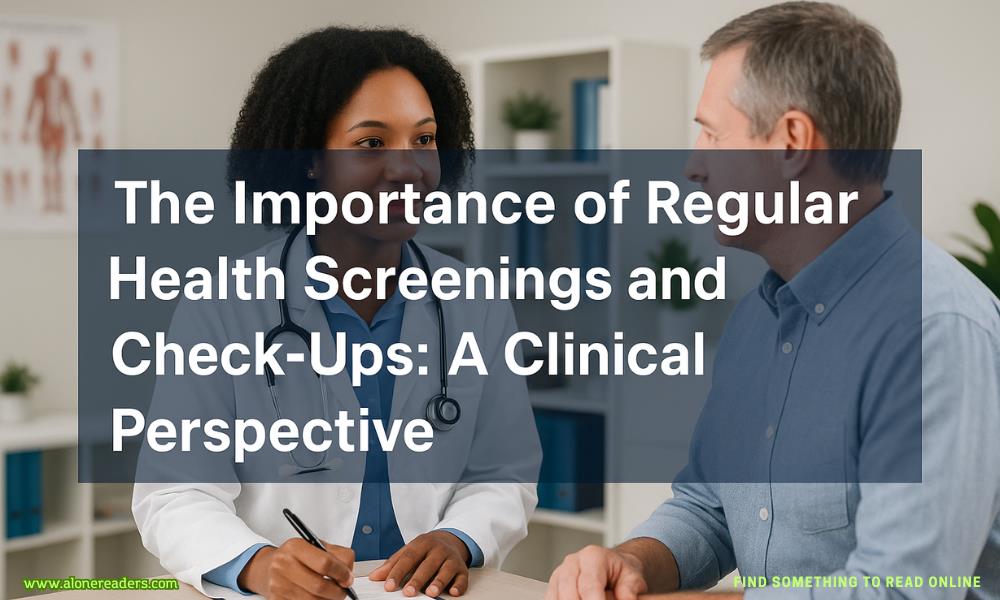
In modern medicine, regular health screenings and routine check-ups form the backbone of preventive care. Far beyond a formality, these practices serve as critical tools in identifying asymptomatic diseases, minimizing risks of complications, and improving quality of life. While many individuals wait until symptoms arise, clinicians stress that by the time some diseases present visible signs, significant damage may have already occurred. The importance of regular evaluations lies not just in disease detection, but in establishing a health baseline, tracking changes over time, and fostering a proactive relationship with your healthcare provider.
The transition from reactive to proactive care
Preventive healthcare aims to reduce the burden of chronic diseases, which are often diagnosed late due to lack of symptoms. Conditions such as hypertension, diabetes, high cholesterol, and certain cancers may progress silently. Regular screenings allow clinicians to detect subtle biological deviations before they culminate in clinical disease, enabling interventions that are less invasive and more cost-effective.
Cost-effectiveness of early intervention
Diagnosing a disease in its early stages often results in lower treatment costs, shorter recovery periods, and better patient outcomes. For example, removing a precancerous polyp during a routine colonoscopy is significantly less expensive and dangerous than treating late-stage colorectal cancer.
Childhood and Adolescence (0–18 years)
Young Adults (19–39 years)
Middle Age (40–64 years)
Senior Adults (65+ years)
Family history-based screenings
Individuals with a family history of heart disease, certain cancers (like breast, ovarian, colon), or autoimmune disorders may require earlier and more frequent testing.
Occupation-specific screenings
Workers exposed to hazardous materials (e.g., asbestos, solvents, noise pollution) may need periodic pulmonary function tests, audiometry, or chest X-rays.
Lifestyle-based evaluations
Establishing health baselines
A physical exam includes vital signs (blood pressure, heart rate, respiratory rate), general appearance, skin checks, and an evaluation of organ systems. These benchmarks help track deviations over time.
Doctor-patient relationship building
Routine check-ups enhance communication and trust. When a physician is familiar with your history, they are more likely to notice subtle shifts in your health and behavior.
Counseling and lifestyle guidance
Check-ups are opportunities for clinicians to offer tailored advice on diet, exercise, sleep hygiene, stress management, and vaccination updates.
Time constraints and accessibility
Busy schedules often lead to postponement. Employers can play a role by offering health screening days or flexible medical leave. Telehealth options are expanding access as well.
Cost concerns
Many countries offer subsidized or fully covered preventive screenings. Even in private healthcare systems, early screenings can prevent costly future treatments. Health insurance plans often include coverage for annual check-ups.
Fear of diagnosis
Fear is a powerful deterrent, especially for life-threatening conditions. Health education campaigns should focus on the benefits of early detection and the high treatability of diseases when caught early.
Cancer survival and stage correlation
The 5-year survival rate for localized breast cancer is over 90%, but drops to 28% for metastatic cases. Similar patterns are seen across cancer types.
Cardiovascular event prevention
Routine ECGs, stress tests, and cholesterol assessments allow cardiologists to prevent myocardial infarction or stroke with early lifestyle or pharmacological interventions.
Diabetes and organ protection
Early identification of insulin resistance can prevent damage to the kidneys, nerves, and eyes. Lifestyle modifications at the prediabetes stage have shown to reverse or delay progression.
Annual physicals:
Most adults benefit from yearly check-ups, though frequency may vary based on age, health status, and personal risk factors.
Biannual dental and vision exams:
Prevent not just cavities and refractive errors, but also gum disease and glaucoma, both of which have systemic associations.
Every 3–5 years for certain tests:
Lipid profiles and cervical cancer screenings may be spaced out depending on prior results and guidelines.
Conclusion
Regular health screenings and check-ups are not merely boxes to tick—they are life-preserving tools backed by decades of medical research and public health data. While it may seem tedious or unnecessary in the absence of symptoms, the real value of preventive care lies in staying ahead of diseases rather than reacting to them. The earlier a risk factor is identified, the more options you have. Whether you're a young adult managing work stress or a senior navigating aging gracefully, a proactive approach to health can significantly extend your lifespan and improve its quality. Prioritize your well-being—not just for yourself, but for those who depend on you.